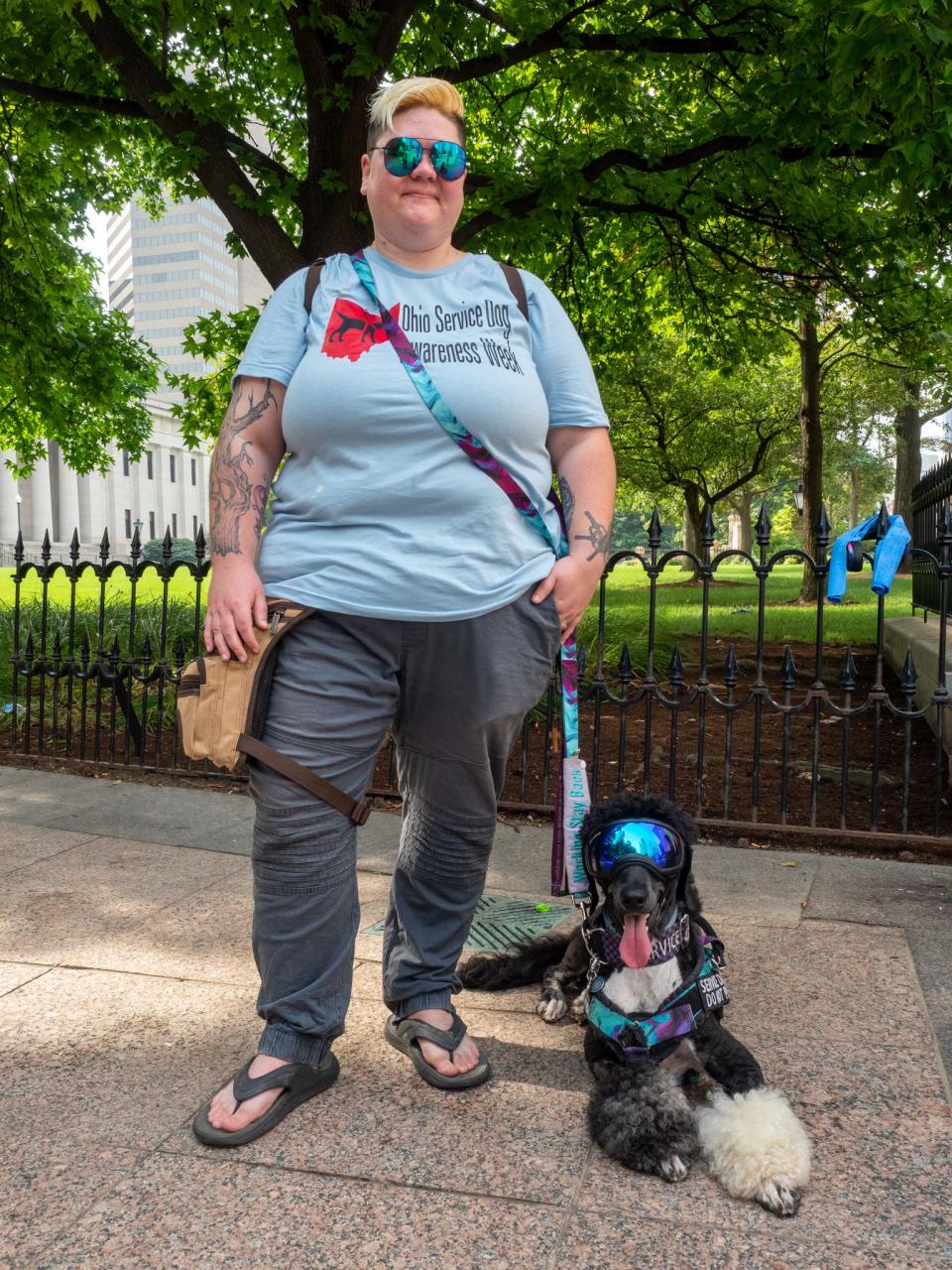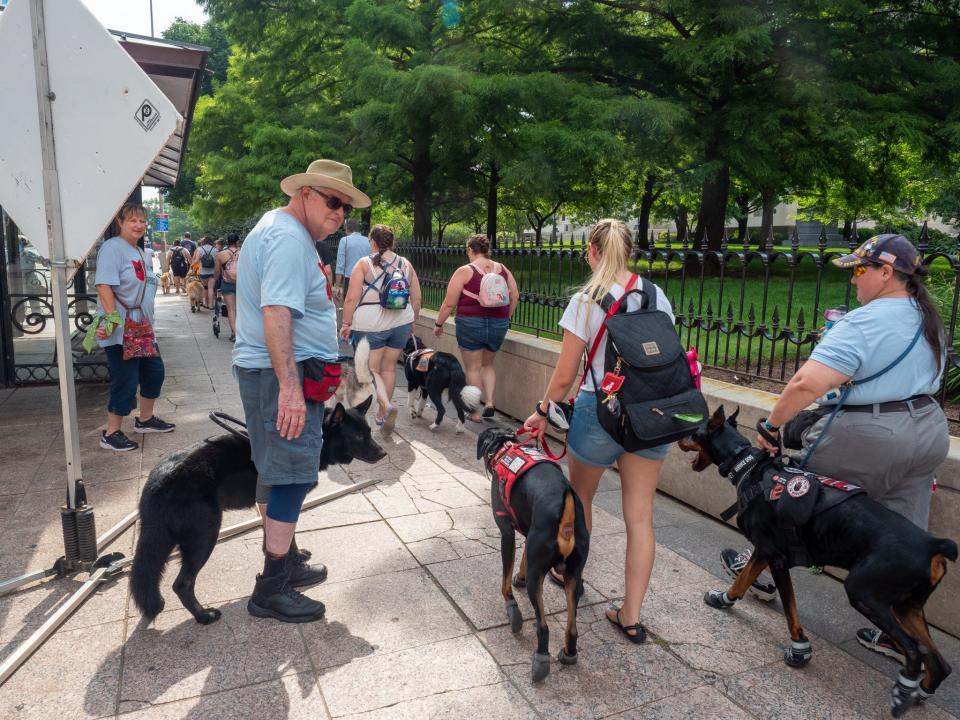Service Dog Awareness Week: Advocates push for access, not pets, for their animals

This week marks the sixth year of Service Dog Awareness Week and with it, advocates hope to raise more awareness for service dogs and the rights of people with disabilities.
Service dogs and advocates alike marched in support of visibility on Saturday. The protestors marched around the Statehouse with signs, a bullhorn and the occasional bathroom break for the dogs.
Christopher Cooley organized the event, which saw few dozen people come out in support. He led the march with his service dog, Larkin, by his side.
"What I'm hoping is people see us out here and know that service dogs are our equipment and that not all disabilities are visible," Cooley said.
State lawmakers passed a bill recognizing Service Dog Awareness Week in 2016, one of the first of its kind in the United States.
Cooley said he hopes other states will adopt their own versions.

Rules for service dogs
Currently, Ohio law and the Americans with Disabilities Act (ADA) allows service animals in all public spaces, including stores, restaurants and hotels.
Nationally, there are about 500,000 service animals in use, including those aiding the blind, deaf or otherwise in need of physical aid, and those for emotional, psychological or other support.
The laws have been in Ohio for over 30 years but, in Cooley's experience, many shop owners still don't recognize that service animals must be permitted.
Kelly Camm is the development director for 4 Paws for Ability, an organization that trains and pairs service dogs with the people who need them.
"They're not doing it just so they can have a dog with them everywhere they go," Camm said. "This is a necessary medical tool that they need and we need to respect that. Just like we would respect the use of someone using a wheelchair, it should be looked at really the same."

Your subscription to the Dispatch helps support local journalism. Stay connected with our daily stories, in-depth reporting and more by subscribing at www.dispatch.com/subscribenow/.
She said that some of the pushback from businesses may be because some people label their untrained pets as service dogs. The pets can often be loud, energetic and can be bothersome to other customers. In these cases, Camm said business owners can refuse to allow the animal inside.
Airlines, in recent years, have begun to crack down on onboard animals claimed as service animals, including miniature ponies, peacocks and pot bellied pigs.
Editorial: Abuse of emotional support animal rule needed to be curbed
"We all love our pets," Camm said. "We all would love to have our pets go everywhere with us. But that's not appropriate when we don't need them, and a service dogs are a durable medical good."
Businesses are allowed to ask if an animal is a service animal and what tasks they perform. But, they can't ask owners more-detailed questions or require documentation.
If he's refused service, Cooley said he always tries to educate business owners who aren't familiar with service dog laws.
He said, for instance, he once walked into a store and was initially told his service animal wasn't allowed. But after a quick Google search, the store owners found that Cooley was right to bring in the animal and allowed him to stay.
"When they educate themselves like that, I just bubble up inside," Cooley said.

How service dogs are trained
Training for 4 Paws dogs begins by the time their eyes open. From then on, service dogs are trained for a specific service, including autism, seizure assistance and seeing or hearing dogs.
Trainers will expose dogs to different situations such as large gatherings, children, fireworks. Only dogs who are unreactive are deemed fit for service and continue on to be paired with their new owners.
Cooley and Camm said a real service animal should be focused on its owner and not its surrounding.
"If it's running around and it's sniffing other people, wanting to be petted by other people all the time, then normally it may not be at service dog," Cooley said.
Those interested in receiving a service dog from 4 Paws first have to apply and be accepted into its program. After being accepted, it's possible for clients to wait up to 2½ years to be matched with a dog and complete a training class together.
Clients also have to pay a $20,000 service fee to pay for the dogs housing, food and training from birth up to when they're matched with their owner, although the costs are often covered by donors.
Service Dog Awareness Week
Camm believes Service Dog Awareness Week is "huge" for the state of Ohio. She hopes that it'll bring more visibility to not only guide animals, but their owners as well.
"My goal is show people that no matter our disability, we are capable of doing the same thing as you," Cooley said.
@abby_bammerlin
abammerlin@dispatch.com
This article originally appeared on The Columbus Dispatch: Ohio Statehouse demonstration aims to raise profile of service dogs

